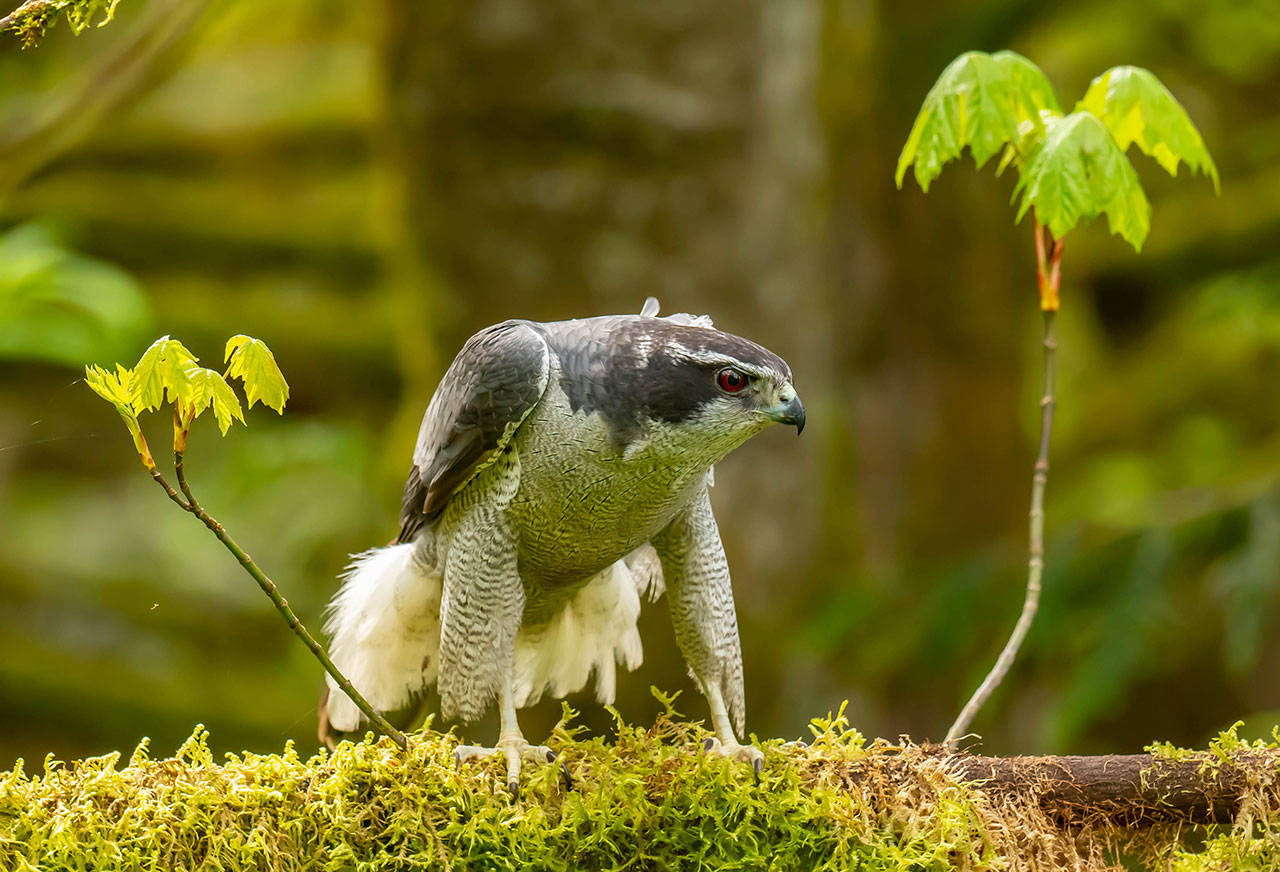By Dianna Moore
Grays Harbor Audubon Society
Shortly after moving to the Pacific Northwest I was invited to participate at a HawkWatch International site above Chelan. My very first day I was photographed by another volunteer holding a female Cooper’s Hawk standing next to a third volunteer holding a Northern Goshawk. My hawk was not happy that close to the goshawk. I was just in total awe at being that close to a bird I had not seen before; what a fierce-looking bird of prey. I look forward to seeing this species again someday.
General Description: The Northern Goshawk is the largest of the three North American accipiters (Cooper’s Hawk and Sharp-shinned Hawk are the other two) and is also found in the Old World. The adult has a solid gray back and lighter gray fine barring on its underside. Prominent white eyebrows over red eyes makes it very distinctive from any other raptor. The tail is longer and wider than the other two accipiters to help it negotiate safely between limbs in the forest.
Habitat: The goshawk can be found in mature coniferous forests, at mid to high-level elevations. They can also be seen along forest edges where prey is more diverse and the forest is a mixture of coniferous and deciduous trees.
Behavior: The Northern Goshawk is a stealthy hunter, approaching its prey slowly and quietly until a burst of speed or dropping from overhead onto the ground ends the hunt. It takes its prey to a perch to pluck feathers or hair.
Diet: Goshawks are opportunistic feeders, taking rabbits, squirrels, grouse, woodpeckers, corvids and any other available bird.
Nesting: Northern Goshawks form long-tern pair bonds, often using the same nests year after year. It is usually found in a conifer, 25 to 50 up in a major crotch of the tree, made of thin sticks and lined with bark and greenery and constructed mainly by the female. She incubates two to four eggs for about 32 days while the male feeds her and occasionally incubates the eggs while she feeds off-nest. Following hatching, the female broods constantly for 14 days. The male feeds her and she feeds the chicks. The nestlings begin branching at 34 to 35 days and begin short flights after that. The parents continue to feed the young until they are about 70 days old. Both parents aggressively defend the nest.
Migration: Goshawks are not migratory but may move in elevation following their prey. They may also go through irruptive years when their prey base collapses and they move farther south.
Conservation Status: Northern Goshawks are a species of concern in the state of Washington, with logging being the main threat.to the species.
When and Where to Find on Grays Harbor: I’m going out on a limb here to say the only chance to see this bird is in the Olympic National Park, and you would have to be very lucky to see one. But that is why we bird! Because when the magic happens, and you get to see one of those rare-to-our-area birds, it’s worth it. This is one such bird. Good luck.


